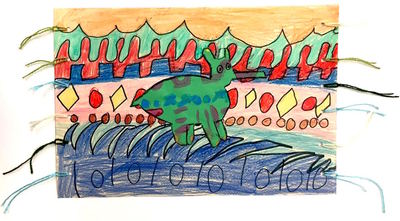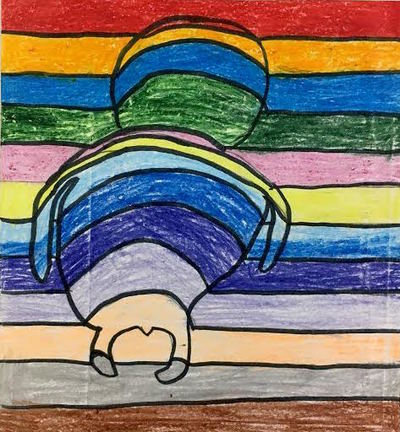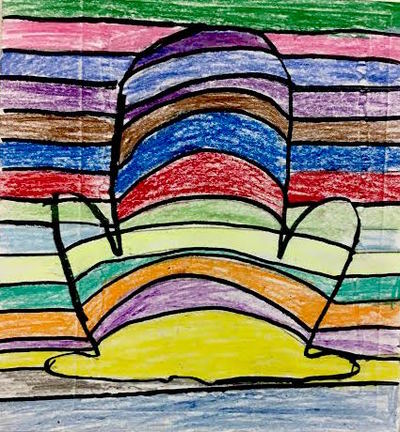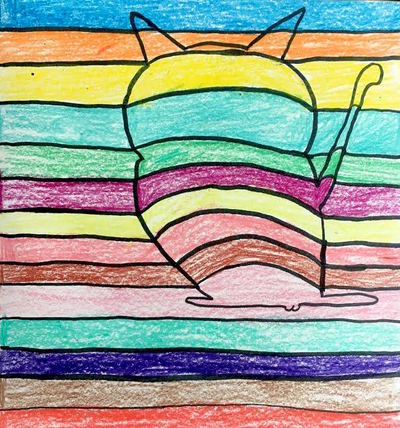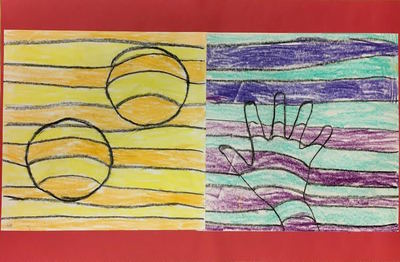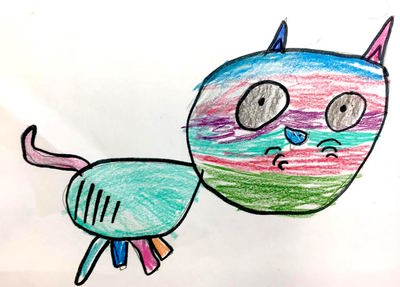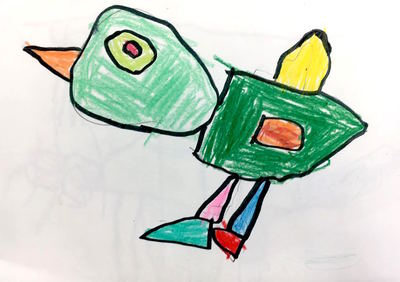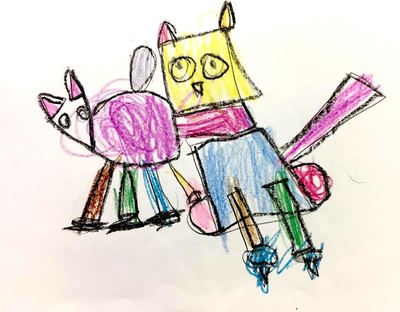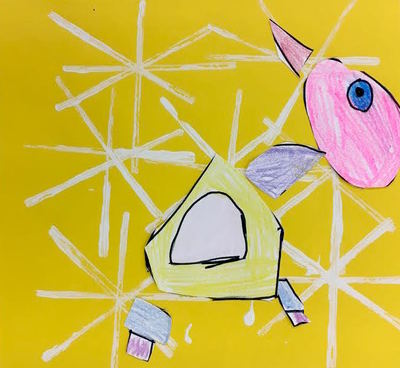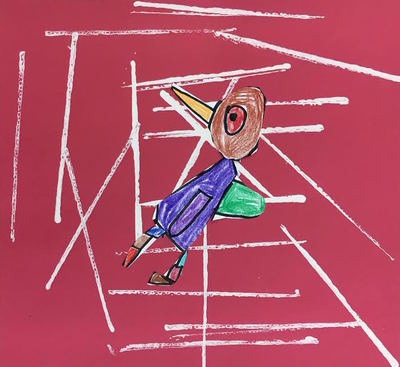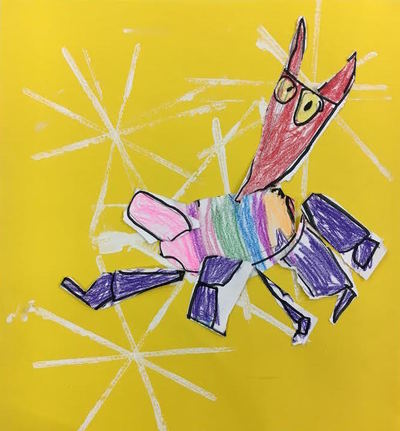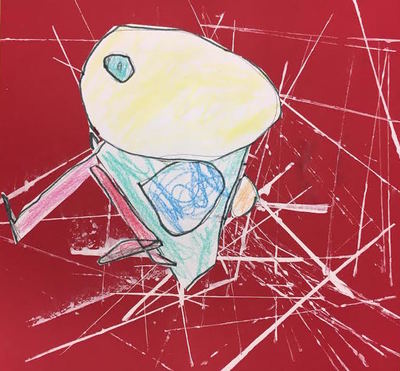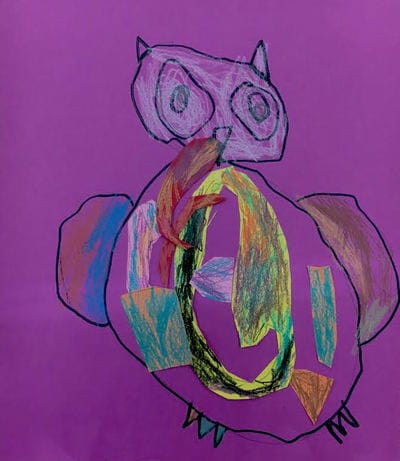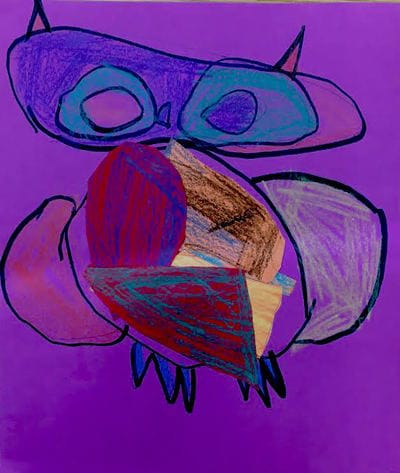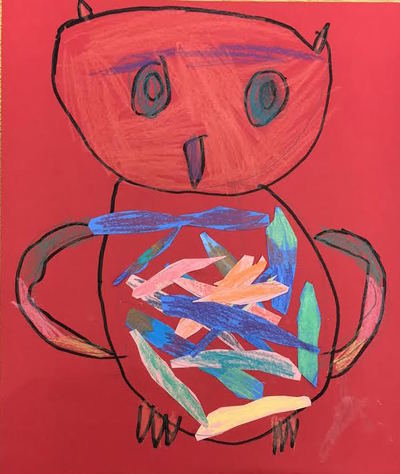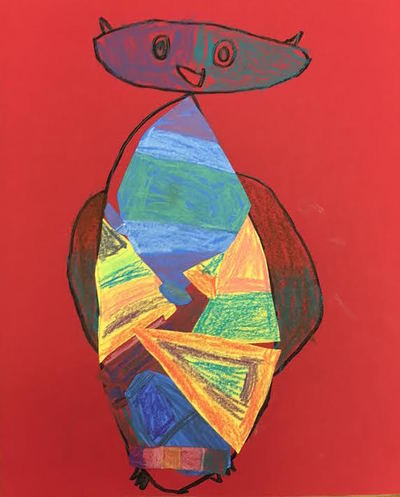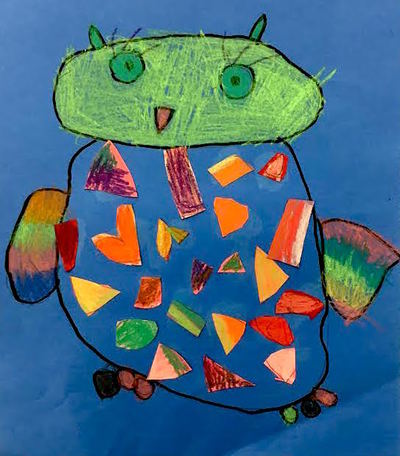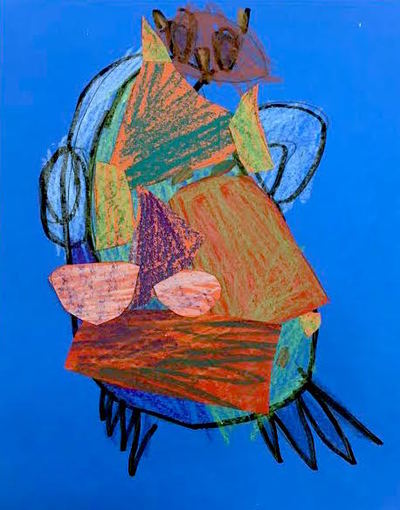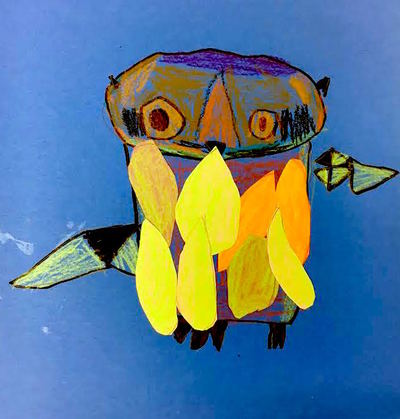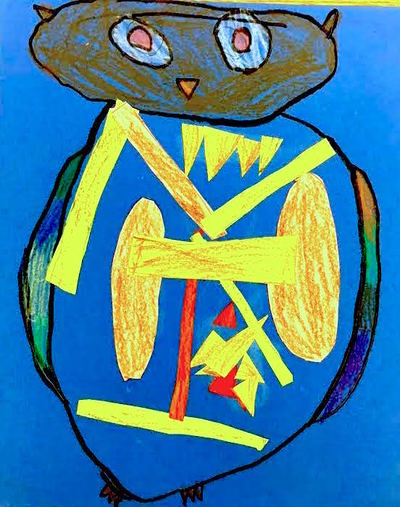|
Students learned about the Navajo Native American Culture along with different line designs and patterns. On a large sheet of board paper students drew different invented patterns and practiced line designs before using solid crayon coloring to cover the entire space. Students then painted line designs and patterns on sheets of colored paper, which were used to create their animals before pasting them onto their "rugs." The final step entailed fashioning yarn tassels on the ends of the paper to get the desired look of a rug.
0 Comments
Using previous knowledge of creating Op Art students learned how to draw an animal just using its silhouette. Using the same horizontal lines and bridge technique students used creative expression to color with solid color all their lines to build their 3D animals.
Students were introduced to the 1960s art movement phenomenon Op Art, which stands for Optical Illusions. Showing 1960s images while teaching vocabulary such as three-dimensional versus two-dimensional we talked about how simple lines can create 3D forms. Students were asked to trace their hand on one small square sheet of paper and a circle on another for their Op Art subjects. Students had to color in their work using cool colors in a pattern on one and warm colors in a pattern on another.
Students built off of their knowledge of creating animals with shapes from the previous owl project. As a class we brainstormed several animals and what shapes could be used to build them. Students were asked to draw a large shape animal of their choice and use solid color to color it in. Students also learned about using unconventional tools to create shapes to formulate a background for their animal using a cardboard square with white paint. The second class students cut their animals into pieces placing them back together into abstract animals.
Students have been learning about shapes and how they are incorporated into the world such as animals. To get students acquainted and comfortable with creating animals from just shapes I introduced the simple Owl. Going over what shapes make up an owl with the students I demonstrated that the owl had to fill the page, must be colored in with constructions crayons then students would receive scrap paper to create feathers from shapes. There's always expectations such as experimentation with color, solid coloring and filling the space with their images.
|
Shea BrookHello, thank you for visiting my blog! I'm so excited to share my teaching journey and display lessons with artists, fellow art educators and parents of the students I'm so honored to teach. Archives
May 2024
Categories |
















